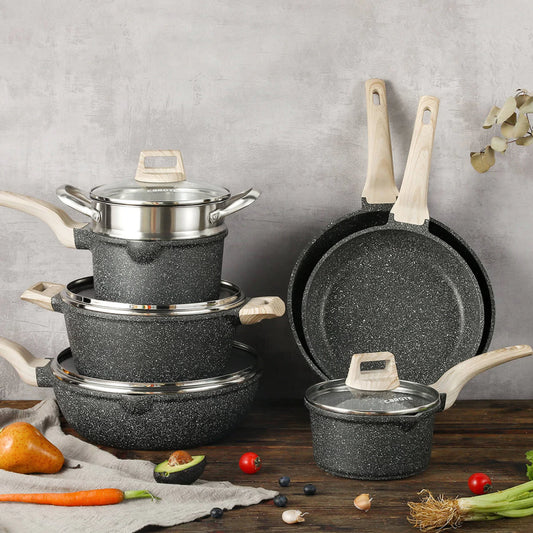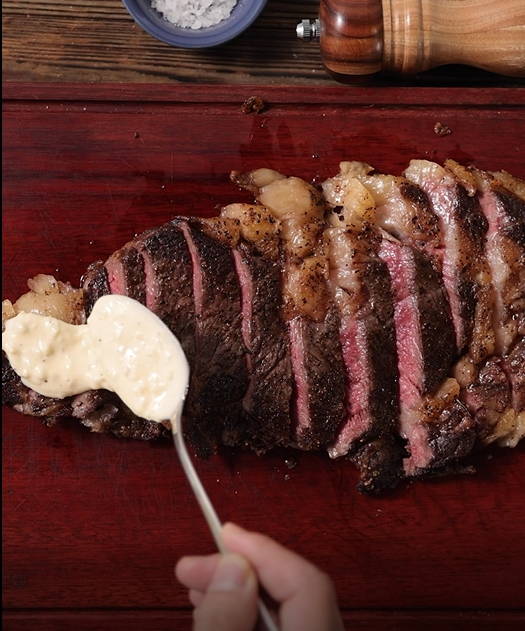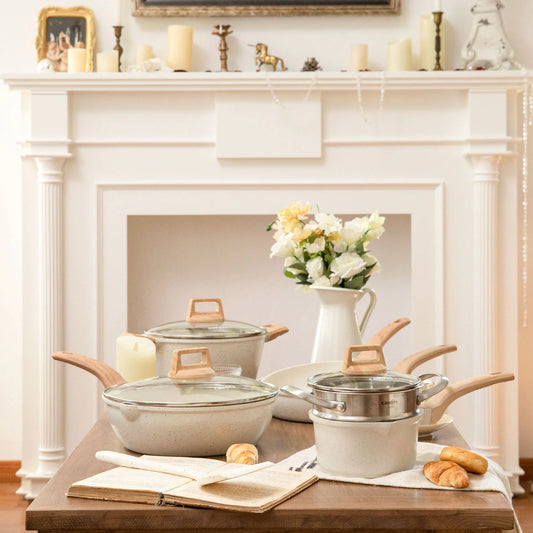Carote has driven its goal of becoming the global top valued cookware brand with premium quality cookware and the most valuable price & excellent services. We have received high-reviewed comments from customers all over the world.
And with time passed, we also received a lot of questions about granite pots and pans: their problem, use, cleaning, and maintenance. Now we have gathered the frequently asked questions to show you why these would happen and how to prevent them.
FAQ:
1.When Heating The Pan, Why Does Oil Move To The Edge?
From the technical aspect, heating the pan will lead to some internal bulge in the center to make it a bit not flat. The main problem that causes this is the uneven temperature on the nonstick surface. Because when we place the pan on the stove, it will firstly transfer heat to the center, and the oil there heats more quickly and becomes less viscous, while the edge is not heated well.
To prevent this, make sure you place the pan level first if you are using a gas stove, and we suggest using low heat to preheat the pan for about 1–2mins to make heat evenly because once the metal(which is aluminum in granite cookware) heats up, the surface will expand. You can also use an oil brush to apply the oil evenly on the surface.
2. Why The Center of The Pan Has Brownish or Even Black Stains After Heating?
First, you need to check the fire level and see if you used high heat to empty heating the pan. For this problem, high heat will damage its structure and deteriorate the coating making it sticky and discolored. We suggest using a low-medium fire level to avoid this problem because granite cookware is produced based on die-cast aluminum core, with an expanded and thickened bottom that can provide excellent heat distribution and quick heating.
If it’s a circle in the center, you may be using an induction cooker. The induction cooker transfers heat to the bottom directly instead of through the inner metal thermal coil, like an electric stove does, which makes it heats faster than any other stove and can quickly reach a critical point. At this point, we advise putting the oil into the pan first to prevent sudden temperature change, and the power rate must be lower than you usually do with a cast-iron skillet; only low to medium is enough.
3. Why Was My Handle Discolored After A Couple of Months?
Handle material is bakelite with wood grain. It has a nice stay-cool function, ensuring safety when using the pan. But the material can’t endure high heat, especially if its gas stove with naked flame coming out from the bottom, just like wood, it touches the fire then it’ll discolor, even turn to total black. Thus, it’s necessary to ensure the flame doesn't exceed the pan’s bottom when using the gas stove.
4. Why Is The coating Chipped Off/Scratched?
We used Swiss-delivered granite coating with triple food-grade reinforced 5 layers to ensure its excellent nonstick performance and quality. Yet the coating is required for specific care & use.
If you are using metal utensils or cooking some hard-shell seafood, it’s time to stop that. Metal utensils will scratch the nonstick surface, and when cooking hard-shell seafood, you need to keep stirring it to heat evenly, but this will also cause scratches on the coating. Same as dropping or colliding the pan on the floor or other hard objects. That’s why we only suggest wooden or silicone utensils, these are doing well with nonstick coating.
The other reason causes this problem is storage. As we mentioned explicitly in another article about dos and don’ts of nonstick cookware, it’s needed to put a paper towel on top of each pan if you want to stack them up. Because sometimes you take out the pan, it might be scratched by another one.
5. Why There’s Black Residue On The Bottom After Washing?
I guess you used the dishwasher to clean it. It may seem easy and convenient to clean the pans using a dishwasher, but not every pan is suitable for putting into it because under high water temperatures and harsh detergents eat through the coating. Over time, the dishwashing process can break down the coating, causing it to flake off.
We only recommend handwashing for granite pots and pans, and you only need to soak it with warm soapy water and clean it with a soft sponge or dishwashing cloth, then wipe out the water, and voila! This is another thing that a nonstick pan brings——easy cleaning.
6. Do I Need To Pre-season The Pan For First Use?
The simple answer is: No, you don’t. The granite pots and pans are coated with 5 layers, it already has a great nonstick performance. Season the pan only to extend the nonstick surface’s durability and prevent rust like cast iron pan does, which requires pre-season and daily season. If you are worried that the nonstick surface will lose its ability, it’s better to treat it with reasonable care; as we mentioned, try to avoid those “don’ts” and do better for “dos.”
7. Can Granite Cookware Go Into The Oven/Dishwasher?
These can’t be used in the oven or dishwasher for granite pots and pans as we use bakelite handles. It can’t endure high temperatures because it’ll damage the handle. And as we mentioned earlier, if nonstick pans are under high water temperatures and harsh detergents, the nonstick surface will be damaged. For daily use, do not heat the pan over 380 Fahrenheit.
If you have any questions regarding our products, please do not hesitate to contact us. We’ll help you as best as we can:)




